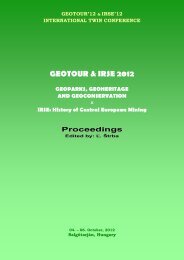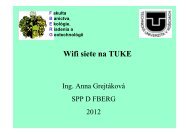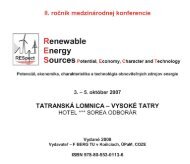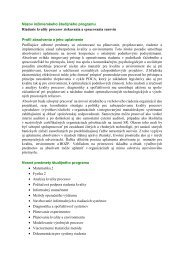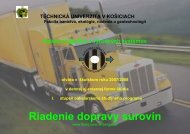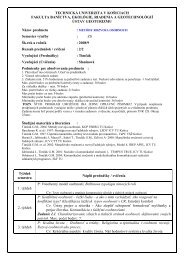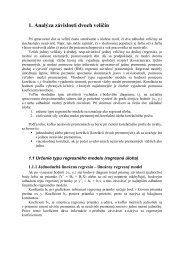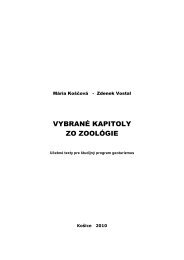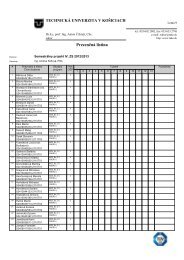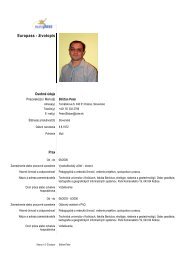GEOTOUR & IRSE 2012.pdf - Fakulta BERG - TUKE
GEOTOUR & IRSE 2012.pdf - Fakulta BERG - TUKE
GEOTOUR & IRSE 2012.pdf - Fakulta BERG - TUKE
You also want an ePaper? Increase the reach of your titles
YUMPU automatically turns print PDFs into web optimized ePapers that Google loves.
Salgótarján, 04. – 06. 2012<br />
the so-called “Old Copper Basin”, operating until the nineties of the 20th century, in the<br />
region of Złotoryja and Bolesławiec. Mining activity aimed at obtaining copper ores were also<br />
carried on in a number of other places, such as Kondratów, Prusice, Chełmiec, Lipa,<br />
Głuszyca, Jugowice, Wieściszowice, Dziwiszów, Szklarska Poręba.<br />
The object of exploration and exploitation in the area of Lower Silesia were also polymetallic<br />
deposits containing silver. Historically, the major centres of lead and silver ore mining and<br />
metallurgy included: Srebrna Góra, Boguszów, Jabłów, Dziećmorowice, Bystrzyca Górna,<br />
Janowice Wielkie, Radomierz, Przybkowice, Marcinków, Lutynia, Karpacz and Kowary [4,<br />
9].<br />
Poor deposits of tin ore occur on the northern slopes of the Izerskie Mountains, in the vicinity<br />
of Gierczyn and small amounts of cobalt minerals exist in their neighbourghood, in<br />
Przecznica. The tin ores were exploited in the 16th and 17th century, and the cobalt minerals<br />
were exploited in the 18th and 19th century [4, 10, 11, 12, 13, 14].<br />
The exploitation of iron ores was also carried on in Lower Silesia. The region of Kowary and<br />
that of Janowa Góra were abundant of easily accessible magnetite. In Kowary, the iron ores<br />
had been exploited since 1148. In the second half of the 19th century, Stanisławów near Jawor<br />
became an important centre for mining that material.<br />
The mining works on the Sudeten deposits, apart from few exceptions, were carried on<br />
periodically, In the initial stage of exploitation, the richest and most easily accessible deposit<br />
parts were extracted. They often included vein deposits, initially evaluated as abundant but<br />
then turned out to be small and difficult in exploitation, which led to abandoning of mines,<br />
devastation of their equipment and flooding of workings. The mining activity was interrupted<br />
by wars, epidemics, population migrations or by falling prices of raw materials. Over a long<br />
period, the knowledge about the Sudeten deposits was limited to those already recognised<br />
during the mining activity carried on throughout the centuries, in the shallow near-surface<br />
parts [4].<br />
The documentary collection of the former German Higher Mining Office in Wrocław<br />
(Oberbergamt zu Breslau) constitutes a rich source of information on the history of mining in<br />
Lower Silesia, in which the especially rich materials come from the years of 1779 – 1852 (the<br />
period of managing the mining and metallurgical activity in the Silesia). The main source<br />
publications for historical studies are codes containing names, summaries and full texts of<br />
documents from old chronicles. Furthermore, the works by H. Festenberga, E. Steinbecka and<br />
H. Fechnera contain plenty of information. Among the works published after 1945, the work<br />
by H. Dziekoński [4] is of special importance as it is a comprehensive source of information<br />
on the history of Lower Silesian ore mining.<br />
REMAINS OF FORMER ACTIVITY<br />
Nowadays, most of the formerly exploited deposits in the area of Lower Silesia are only of<br />
historical importance. Hundreds of years of the intense exploration and mining works left<br />
numerous footprints in the area, still readable despite the lapse of centuries from the<br />
termination of the activity. Inherent landscape element which is characteristic especially for<br />
the mountains and foothills is numerous remains of former mining activity. They constitute a<br />
precious and wealthy source of knowledge about the development of deposit mining<br />
technology, providing the evidence of knowledge and skills of the generations of miners<br />
connected over the centuries with the area of Lower Silesia. These relics occur in the area<br />
mostly in the form of clearly distinguished heaps of waste rock, land subsidence, and often in<br />
the form of partly or fully survived underground workings: (vertical or inclined) shafts,<br />
(horizontal) drifts often in good condition, ruins of mine buildings, ore processing and<br />
concentrating equipment (e.g. stream water damming reservoirs), or numerous footprints of<br />
intense exploration activity – in the form of trenches or shallow shafts (hitherto usually<br />
interpreted as the footprints of fortification!). These objects are usually devoid of any<br />
104



